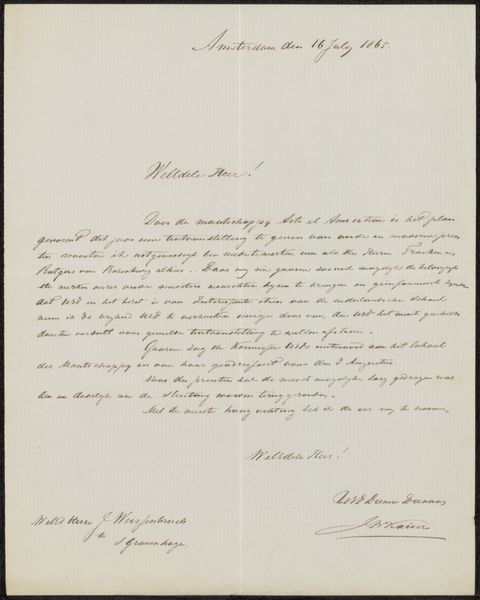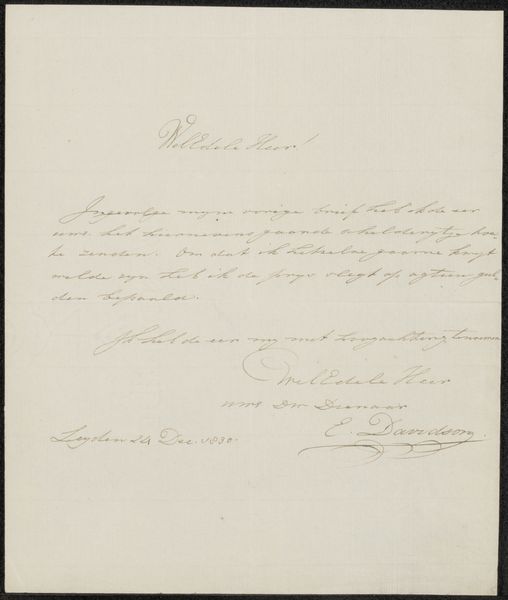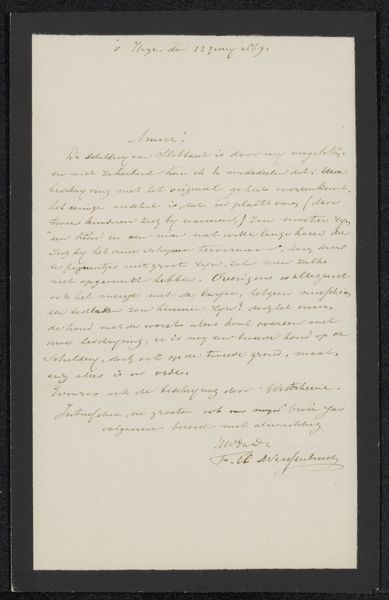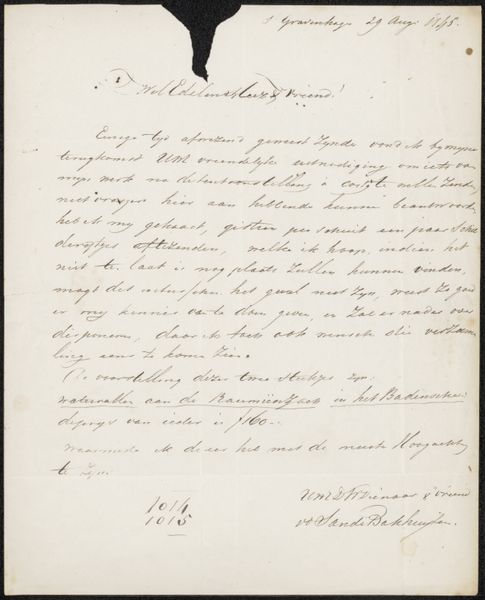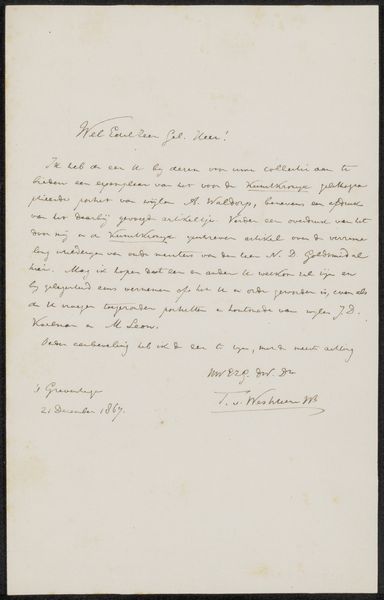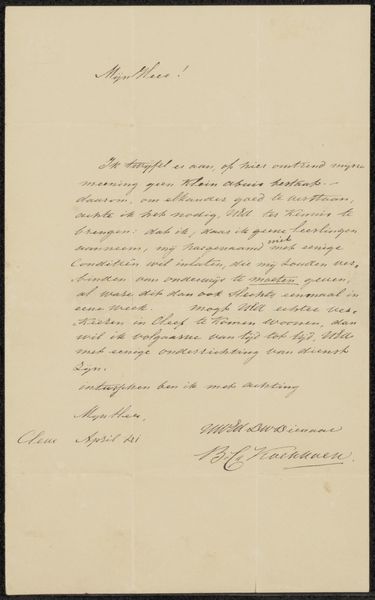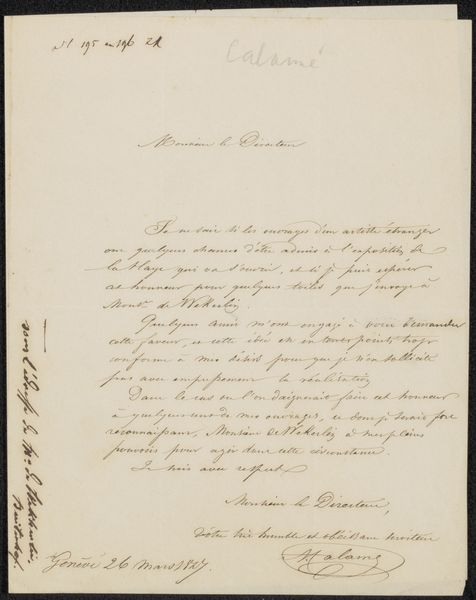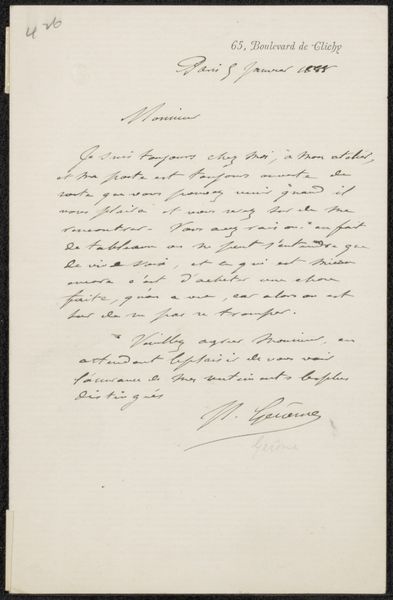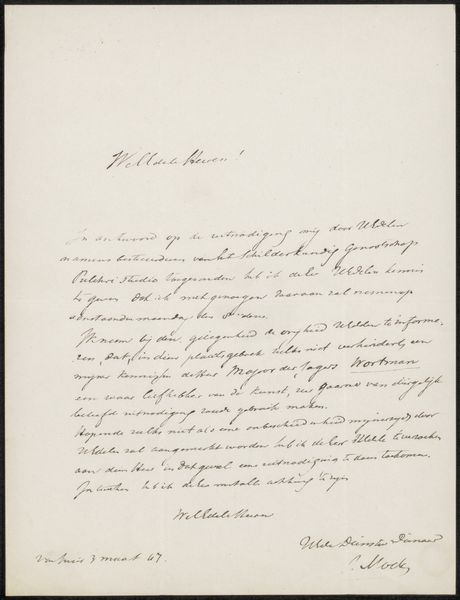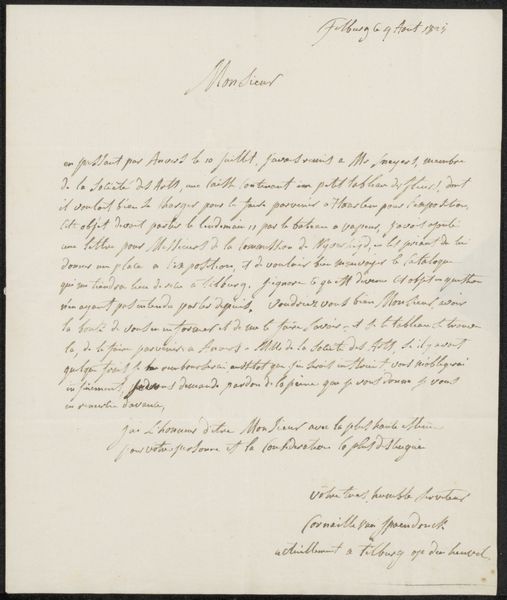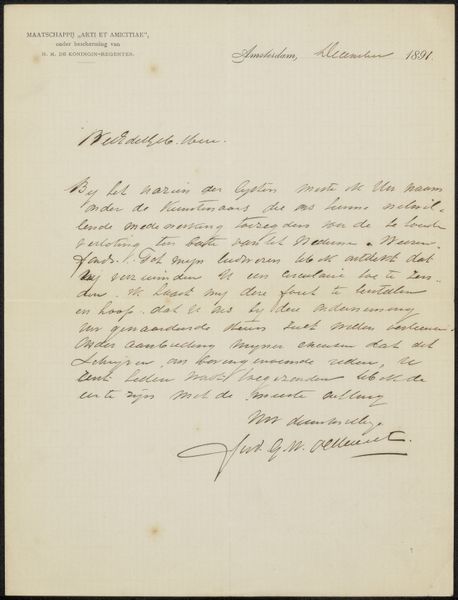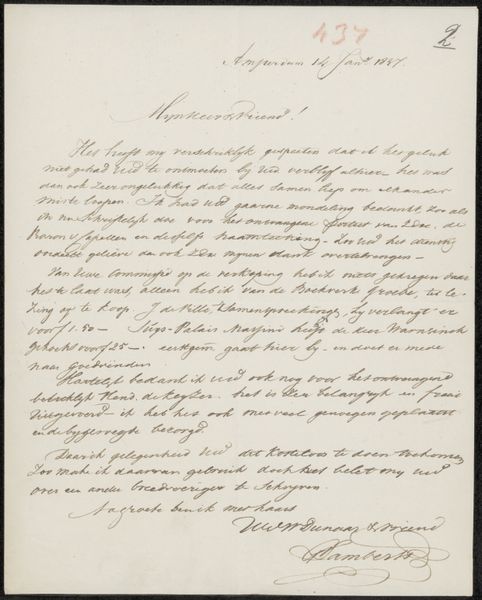
drawing, paper, ink, pen
#
portrait
#
drawing
#
aged paper
#
narrative-art
#
ink paper printed
#
old engraving style
#
hand drawn type
#
paper
#
personal sketchbook
#
ink
#
ink drawing experimentation
#
romanticism
#
ink colored
#
pen work
#
sketchbook drawing
#
pen
#
academic-art
#
sketchbook art
Copyright: Rijks Museum: Open Domain
Curator: Here we have “Brief aan R. Engels” which translates to "Letter to R. Engels," potentially created between 1843 and 1845 by Barend Cornelis Koekkoek. It’s an ink and pen drawing on paper, held in the Rijksmuseum collection. Editor: Ah, yes. At first glance, it looks like an elegantly scripted document, that aged paper radiating a sense of history and deliberation. What kind of mood does it evoke in you? Curator: It evokes a sense of academic refinement, capturing the era's formal communication style. Letters then were vital for cultural exchange and intellectual discourse. The narrative theme pulls you into the dialogue of the past, between two artists. Editor: Absolutely. You can almost hear the scratching of the quill, see the writer paused in contemplation. To me, the artistic touch—that slight flourish in the script—suggests more than just simple correspondence, something elevated above pure function. A piece of personal connection crafted carefully. Curator: Indeed, Romanticism flourished during this time, so letters were valued as art forms themselves. This letter embodies that sentiment. The drawing itself gains importance as we examine Koekkoek's socio-political context as an established landscape painter, perhaps engaging in a dialogue to expand his artistic ideas. Editor: Landscape painter exchanging written views? Interesting, especially imagining those rural, majestic scenes reduced into the intimacy of pen strokes and carefully chosen words. Does that contrast alone tell us something, then? The world writ large, filtered down to a human scale? Curator: It illustrates the Romantic period’s emphasis on individualism and personal expression, alongside the evolving cultural landscape where the exchange of ideas shaped art and identity. The letter showcases this interaction within artistic circles of the 19th century. Editor: I'm drawn to how physical and direct written correspondence is as a means of conveying ideas compared to our modern modes. Maybe we lose that certain… gravitas, a sense of committed expression with instant communication. Curator: It certainly represents an interesting shift in cultural communication that modern mediums lack. Editor: This exercise made me think of the quiet intensity you see in old photographs, like a captured echo that links back to times we'll never grasp. Curator: An insightful consideration of past to present! It's through analyzing works like these we begin understanding art as a communicative force over time.
Comments
No comments
Be the first to comment and join the conversation on the ultimate creative platform.
